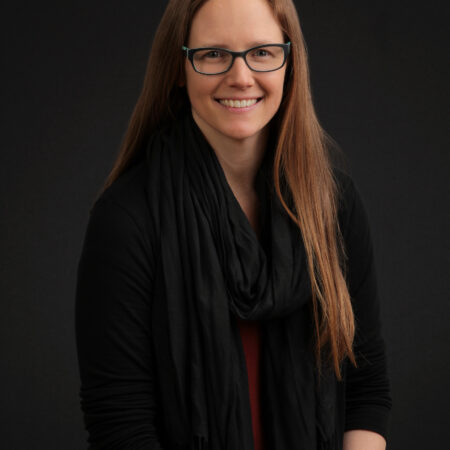Blog Insights
Transform Data into Tangible Stories
Meaningful data is a tremendous asset to advocates, policymakers, and mission-driven organizations. Increasingly, organizations of all sizes have access to digital tools that provide data, but data storytelling—making facts relatable and actionable—takes additional effort to transform data into tangible stories.
City Health Dashboard, a project of the Department of Population Health at NYU Langone Health, supported by Forum One, is a model for making their rich data accessible to all of their audiences and at data-driven storytelling. The online platform provides metrics on over 40 measures of health and drivers of health for over 750 cities across the U.S. While full data sets are made available and used extensively by researchers and city governments, City Health Dashboard has learned that simply providing data isn’t enough. To make the data more accessible, they’ve developed a communications strategy based on storytelling products that make the data come alive.
In our webinar Data Storytelling That Deepens Engagement, Samantha Breslin and Becky Ofrane of City Health Dashboard shared their approach and the lessons they’ve learned in supporting a diverse and growing data platform.
Develop a strategy for data storytelling
The City Health Dashboard provides a case study in data storytelling that is unique to their platform but provides universal lessons for any organization looking to use data to reach audiences or influence action.
Know your audience
The City Health Dashboard team regularly considers more than ten primary and secondary audiences. City-level leaders, decision-makers, and community advocates actively using data to improve health and wellbeing in specific communities are among the primary audiences. Broader health, education, community development advocates, philanthropies, researchers, students, and media are also key users of the data, drawing larger lessons and trend lines on everything from smoking rates, walkability measures, and children in poverty across the U.S.
The City Health Dashboard team uses data from their own web traffic and data downloads to spot trends among Dashboard users, understand what measures are of particular interest, and follow up on feedback and media coverage related to their data. Understanding the different needs of varied audiences has helped the City Health Dashboard team design storytelling products that ultimately make the Dashboard easier to use and more accessible to key populations.
Understand your capacity
With over 40 measures of health and health drivers, across all cities with populations larger than 50,000 in the country, the amount of stories the City Health Dashboard team could tell about their data is virtually unlimited. Samantha and Becky explained that while the platform is relatively well-resourced and positioned to grow, the capacity to communicate about the platform falls by necessity to their own small programmatic team. While they are able to access the expertise of in-house investigators and data staff to review storytelling products, the communications team shapes a content strategy that they are confident they can execute with the time and resources available.
Commit to a schedule
Editorial calendars and a schedule of production help the City Health Dashboard team stay on top of storytelling production. Initially, they piloted and experimented with new formats, ultimately figuring out the lead times and outside resources necessary to produce a monthly email and short data story, with longer pieces scheduled quarterly. They leave room to be responsive to news hooks and new data on their social media channels and plan for six months to a year out on major new initiatives or data updates.
Design your data storytelling products
The City Health Dashboard has adopted a layered approach to data storytelling. The deepest layer is the Dashboard itself—embraced by researchers and policymakers who use the platform to its full capacity, running analysis and downloading multiple data sets. But the City Health Dashboard team learned that many key audiences could use different, more guided entry points to the data.
Attract attention with “Snackable” content
Their “Data on the Go” series focuses on just one data point, formatted as a bite-size graphic with a key takeaway in short text. They’re designed so that the graphic can stand on its own and be understandable, even if readers simply scan the graphic on social media or in the monthly newsletter. This kind of storytelling product can drive attention and traffic, serving as a reminder to audiences of the useful information on the Dashboard.
A word of caution: though the shortest, “snackable” content can be challenging to produce. Editing is key; it can be hard to drill down to the key takeaway message and resist adding too much.
Contextualize with Data Insights
The second level of storytelling is contextualizing data. City Health Dashboard’s Data Insights go deeper than “Data on the Go,” but provide more guided storytelling than simply exploring the Dashboard alone. Data Insights frame a key takeaway message, backed up by data. These kinds of in-depth, but accessible reports are especially helpful for reaching news media and other publishers who want to tell data-driven stories but may not have the time or means to produce original findings from the Dashboard.
Communicate Impact with Stories
City Health Dashboard’s Impact Stories provide the context in a different way, highlighting not just the data itself, but how city governments and other policymakers or advocates have used Dashboard data to make a change. These stories provide another level of meaning to the data, showing not only how conclusions can be drawn from the data, but how data-driven policies have an impact.
Tell your own stories
Watch the full webinar for more inspiration from City Health Dashboard, and a sneak peek into their expansion plans. And, get in touch with Forum One for more ideas on turning your own data into stories for influence and impact.
